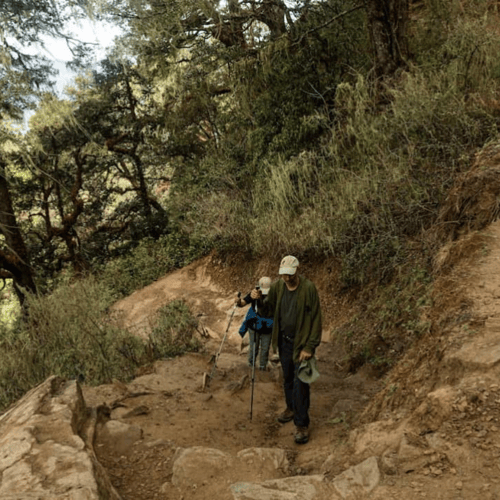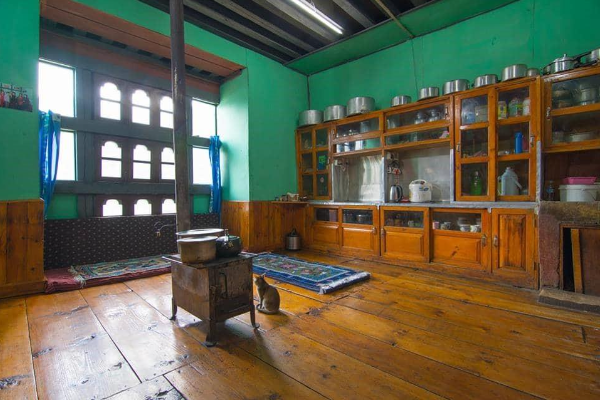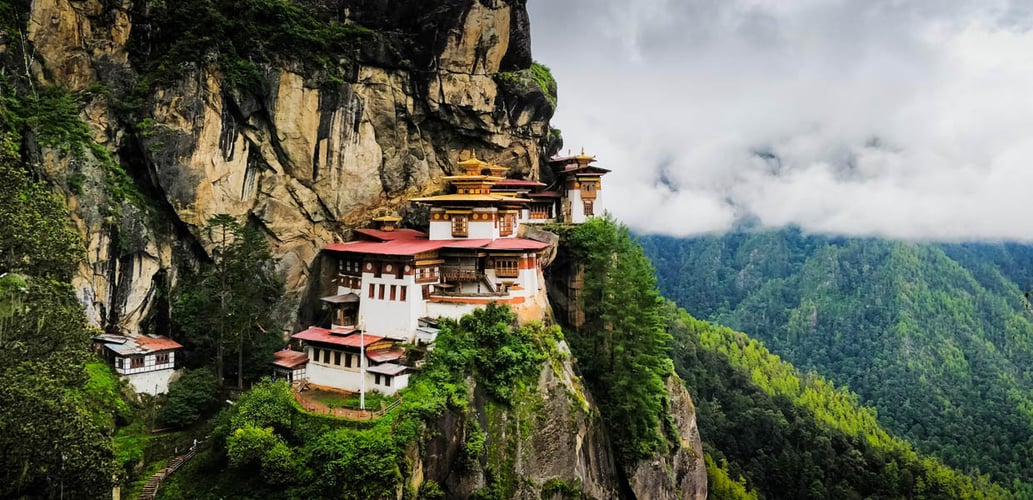Walking through History in Bhutan
The seemingly untouched, tiny landlocked ‘Land of Happiness,’ Bhutan, is sleepily nestled between India and China. A kingdom soaked in mythology with heroic stories of battle where deities win over demons and good triumphs over evil. A country closely tied to its religious past, which has been a sovereign territory throughout its recorded history.
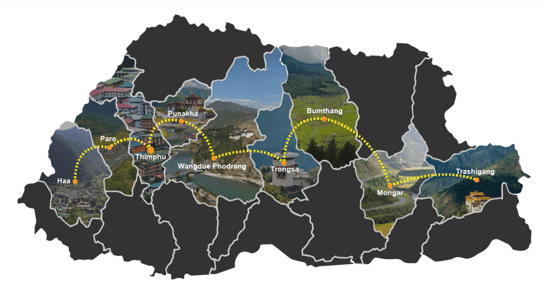
It is a land where the clear blues of the skies and rivers are a mirror of each other, and the dew in emerald-forested valleys smells of freshly cut grass. Snow-capped mountain peaks and passes overlook dzongs, fortresses, and settlements. With prayer flags flapping, prayer wheels turning, and resounding Om Mani Padme Hum chants hanging in the air, the landscape is dotted with numerous monasteries perched on hillsides, looking like jeweled treasures.
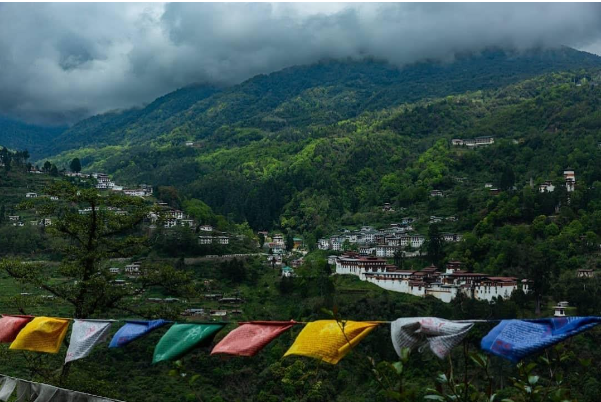
Buddhism is not just the dominant religion in Bhutan; it is a way of life. The citizenry takes extreme care of their natural habitat – considered to be a source of life – making the small mountain nation rich with remarkable biodiversity. This sensitivity is exhibited in the kindness, calmness, and serenity of its people, making the Bhutanese people the happiest society in the world. This reverence for their ecosystem has pushed Bhutan into the modern century, with its environmental surroundings largely flawless. The continual need to match the perfect melody of nature has also pushed the country to restore a historic trail.
The Trans Bhutan Trail holds a significant economic, political, and spiritual meaning for the Bhutanese, where it acted as a cementing factor across diverse communities, bonding them into one nation. The trail traces its long history back to the 16th century, when it was the singular means of transportation for pilgrims, monks, traders, and legendary trail runners, or garps, who delivered messages to dzongs across the country. Spanning 403 kilometers between Haa in the west and Trashigang in the far east, the trail had fallen into disrepair and eventually disuse by the 1960s, due to the advent of modern tarmacked highways. After 60 years, the urgency to preserve Bhutan’s exceptional past from the mounting threat of technological development saw a revival of the glorious past in 2022, by His Majesty the King.
Traveling Through Time:
Dr. Gowri J. Murthy, an esteemed award-winning ophthalmologist, and author of several medical papers on Glaucoma from Bengaluru, traveled with her family to Bhutan recently. Her customized 10-day itinerary by Offbeat Tracks was chock-full of pristine nature trails and long scenic drives through Bhutan. Many destinations on her family tour were crisscrossed with points of interest on the Trans Bhutan Trail.
The family chose a mix of accommodations but preferred to stay in homestays where they could interact with the local people and relish a more immersive experience. Staying in homestays promotes the grassroots-level partnership between the tourism council and residents in far-flung areas, and empowers local women to work and earn a sustainable income. Furthermore, it gives a peek into the rich and disparate cultures of Bhutan.
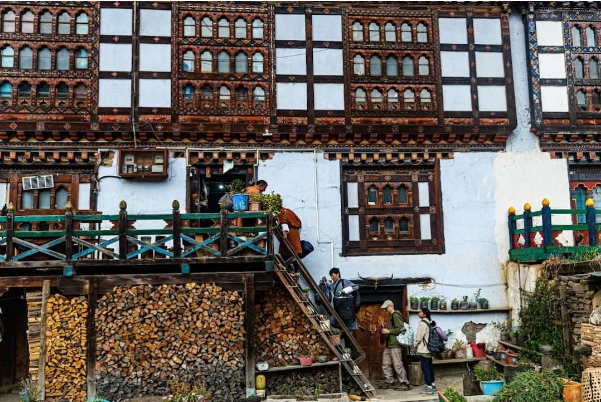
Her favorite homestay on the trip was the famed Haa Valley Homestay, run by an affable and gracious owner, Ugyen. His ancient, three-story farmhouse is more than 200 years old and previously belonged to the District Governor. The charming accommodation looks out on the rustic Haa Valley, with a romantic wooden bridge over a gushing river, and shrines in the far distance of the village. The kitchen is the heart of the farmhouse, as with all Bhutanese houses. According to Dr. Gowri, all homestay owners during their stay were typically generous in their hospitality during their stay, preparing traditional Bhutanese fare for them. Most ingredients are sourced from the homeowner’s backyard, as they are grown there with organic care. Light and buttery Khur-Le or buckwheat pancakes, and margu, a homemade chapati bread made with buckwheat, were staples before long hikes. Her daughter especially savored the flavors of ema datshi, a soup with chili peppers, or ema and cheese datshi, the national dish of Bhutan, and kewa datshi, a thick gravy-like dish made up of potatoes, chillies, and cheese, with rice. The unique concept of a fusion of rice and cheese fascinated her! Chilies are not only used as a spice in Bhutanese cuisine, but also as a vegetable and the main ingredient. Bhutan’s villages and towns are famous for spotting the much-loved chilli drying on rooftops, hanging from windows, and on the ground.
Although there were many scheduled trails and walks for the family, some did not go according to plan due to inclement weather or slippery paths. The local tour guides had to think on their feet for other arrangements and sometimes even alternative routes. One such improvisation was a picnic in a beautiful meadow that was spotted after an aborted pre-programmed hike. Another time, a last-minute change was requested for lodging, and the chaperone immediately organized a desirable substitute. She is especially grateful to Chimmi, their escort, for rapid resolutions.
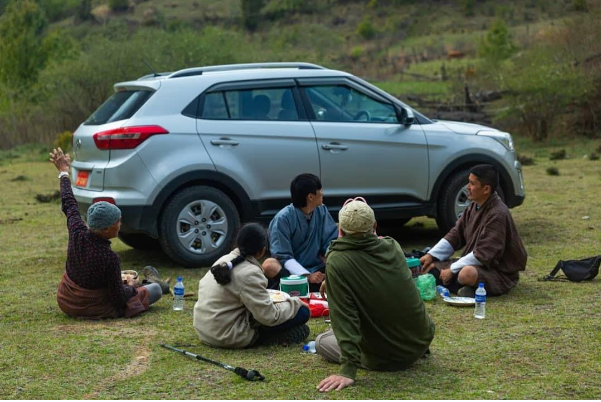
Explore these Gems:
There were several jewels to be seen traveling across Bhutan on Dr. Gowri’s family trip, but The Gangtey Nature Trail topped the list.
Gangtey Nature Trail:
Bound by the Black Mountains, the Gangtey Valley, also known as the Phobjikha Valley, is home to the revered Gantgtey Gompa, established in the 17th century by the grandson of Terton Pema Lingpa, discoverer of spiritual treasures. The monastery is one of the two main centers of the Nyingma school of Buddhism, based on Pema Lingpa’s teachings.
The Gangtey Nature Trail is a popular choice for travelers with a mild 2-hour trek. Commencing from the gompa, the gently sloping pathway traverses through gushing streams, rainbow-hued rhododendrons, and towering jade-toned bamboo plants. Rows of these woody plants end in the Bhutanese settlement of Sumchubara village. The houses reflect the archetypal Bhutanese style of architecture with elevated platforms, engraved windowpanes made from timber, and wood-lined curved roofs. Ambling further, dense pine forests whisper secrets of the forest, before ending in a vast and open valley. The views keep the tourists mesmerizingly transfixed.
The winter months offer their distinct beauty when the valley is cloaked in pearl-white snow, with cloven-hoofed yaks quietly grazing. The cold months also get a seasonal visitor – the black-necked cranes – who make a grand entrance, circling the gompa three times on arrival, making Gangtey Valley their breeding ground and roosting here from late October to mid-February. They repeat the same pattern while exiting Bhutan and flying back to Tibet. The Himalayan black bear, red panda, and Tibetan fox are other animals that one can spot on this trail.
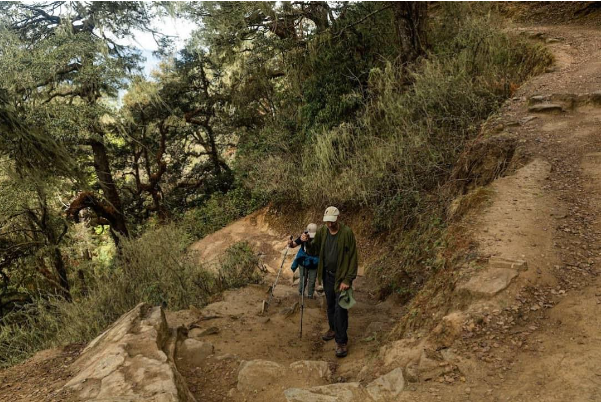
Bumthang Valley:
One of Bhutan’s best-kept secrets, Bumthang is the spiritual hub and nerve center of the Himalayan kingdom. Tempting devotees from everywhere, it is home to some of the oldest and most historic Buddhist temples. The celebrated Trongsa Dzong, the largest fortress in Bhutan, perched on a misty mountainside and built on multiple successive levels, was the seat of power in erstwhile times. Constructed in the 17th century by Zhabdrung Ngawang Namgyel, the distinguished lama who unified the warring factions of Bhutan into one nation, it holds great importance even today, where the Kings of Bhutan pay reverence to this shrine before ascending to the Raven Crown throne. The complexity of its design displays the magnificent aesthetics of traditional handiwork.
The rolling terrain of Bumthang, with its untouched highland beauty, windswept mountain tops, leafy coniferous gradients, and rosy apple trees, marks it as a pristine paradise, making an awe-struck hiker gasp. The serene silence is only broken by the sounds of bells around the necks of yaks foraging the slopes for a hearty meal. The creamy white of the sheep adds to the panoramic color board. Bumthang is divided into four gewogs, or groups of villages – Chhoekhor, Tang, Chhume, and Ura. Each one comes with its own unparalleled pastoral magnificence.
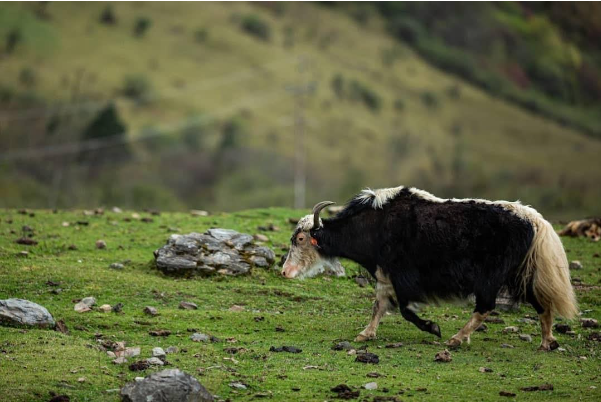
Tiger’s Nest:
Photos of the impressive Taktsang Palphug Monastery, or Tiger’s Nest, amidst the clouds, are perhaps the most characteristic images of Bhutan. Sitting brazenly on a steep cliffside 3,000 meters above the majestic Paro Valley, it is perhaps the climax of one’s visit to the endlessly green beauty and marvel of Paro. The shrine was erected in the 17th century and dedicated to Padmasambhava, also known as Guru Rinpoche, a revered tantric Buddhist master. One of the many legends associated with this sacred site refers to Guru Rinpoche being carried from Tibet on the back of a tigress, to meditate in a cave for three months.
The long walk to this monastery begins slowly and steadily slopes upward with a gradual incline. The first part of the hike is steep, and the time taken to cover it depends on one’s fitness level. For an average person clocking in a decent number of steps per day, it should take about an hour. The wooded views with mist-covered clifftops, flapping prayer flags, and rotating prayer wheels en route lend a spiritual air and almost make the journey easier, encouraging the hiker to push forward. The halfway point is marked by a much-needed cafeteria with a break for piping hot tea. The second part of the journey is relatively easier, with flat paths and downhill sections. A final ascent on the stone staircase leading to the monastery is the only challenge in this segment of the trail. The daunting task is alleviated by a graceful waterfall of crystal clear water running down the rocks, spraying the sweaty walker with cold water.
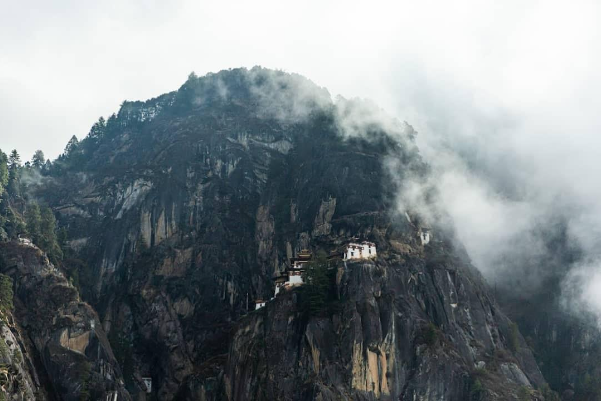
Trails in Bhutan are walking museums replete with fascinating stories, myths, and legends. There are several ways to negotiate the innumerable walking paths across the kingdom. Even though some tracks may prove to be demanding to get around, they are well worth the effort. Most importantly, they provide an immediate association with rural Bhutanese culture and traditions. Offbeat Tracks is heavily involved with homestays on both famous and unconventional trails, helping to boost the local economy. Book your unique tour with us for a walk through Bhutan’s enriching history.
